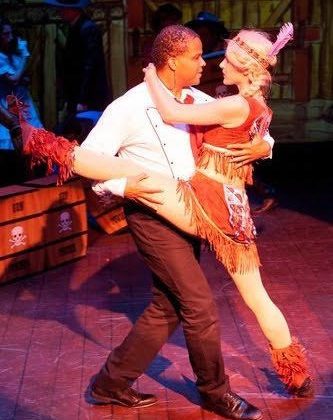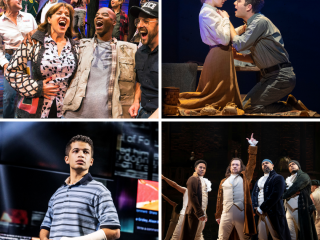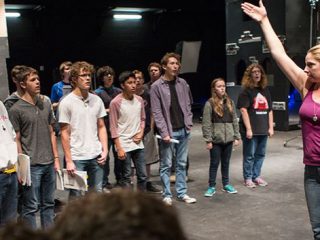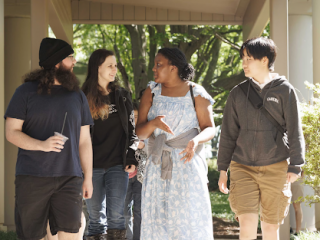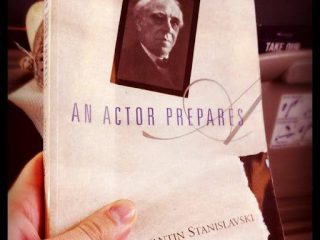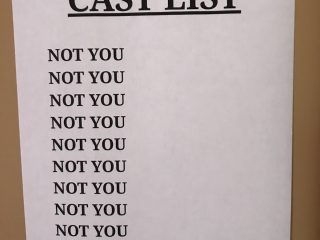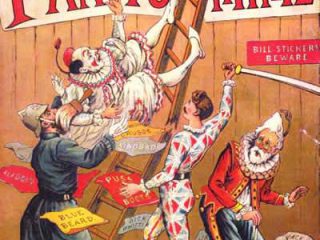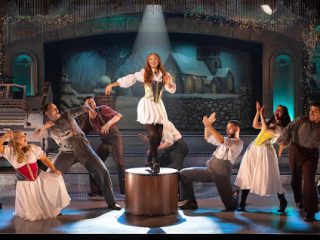When I first began directing, to me, the play was the thing. My mind was focused on the goings on of the stage with limited awareness beyond its borders. It seemed that dealing with the audience was somebody else’s job. If I directed a great play, I thought, people would come and like it. Job done. “Why this play now?” was a philosophical, intellectual question—but not something I really confronted in an educational setting.
I have since concluded that community engagement must be a part of every theatre-making process. In the professional world, I’m finding myself pushed to think about the audience more actively, and am so thankful for it — both as an artist and as a citizen. Now, as the Community Engagement Manager at Long Wharf Theatre in New Haven, CT, I am certain: community engagement is not just something that’s nice to do, tangential to the theatre-making process – it is essential to the creation of the art itself.
There is no theatre without an audience. The audience is as much a part of the playmaking experience as the artists—so how do we incorporate them more actively into what we do? We must work with them – and I’ve learned, in so doing, that working with the community teaches me just as much or more about the play on which I’m working than anything I do in the rehearsal room or on stage.

How does that central dramaturgical question—”Why this play now?” — manifest in the rehearsal room, the theatre, the greater community around your theatre? What conversation are you tapping into? How does the work connect to everything else happening in your community? What people do you want to be a part of that conversation? Why this play now? and with whom?
At Long Wharf Theatre, I spend every day building bridges between the work happening on our stages and what’s already happening in the Greater New Haven area. I work to find new ways to partner with other organizations, invite new people into the theatre and find ways for the theatre to be a good neighbor and citizen to the City of New Haven. Here are some of the takeaways:
1. Create programming that speaks to the issues of your community and draws an audience that will be invested in the work.
Taking a step back— how can we all, as theater practitioners, create programming with the community (the audience) in mind? In order to have great conversations, you have to ask — How does the play fit the audience and the audience fit the play? Does your company have an audience already? Are you looking for new communities? For me, this means inclusive, wide ranging voices and faces on the stage. If the theatre focuses on a singular perspective, the audience will reflect that.
For instance, last season at LWT, we produced Kimber Lee’s brownsville song (b-side for tray). Tragically, this play resonates deeply in the New Haven community, where many people have grieved and grieve lives lost to urban gun violence. It also happens to be a really powerfully written piece of art. Neither was lost on our artistic director when he made this choice. This play told a powerful story that needed to be hear in our community. All told, brownsville brought a thousand new people into our theatre.
The play provided a platform of empathy on which to begin an open conversation about the violence in our community and how, together, we might begin to heal. It was a remarkably unpolitical conversation. Instead, confronted with humanity in the context of story, the community came together around a search to understand. We had an incredible breadth of different kinds of people in our audience, listening to each other, and talking about what happened on stage and what’s happening in our community.
A fantastic example of this was our Sunday Symposium moderated by director Eric Ting, with Erik Clemons and Joe Brummer, which you can watch online here:
2. Partner with other community organizations to extend your reach into the community and continue the conversation outside of the theatre.
For instance—we have an unbelievable partnership with the New Haven Free Public Library through which we host community conversations at local branches with readings of scenes, offer a free pass to the theatre (with a library card) and there’s a full bookshelf in our theatre lobby for patrons to browse and even check out books related to the play. Through this partnership, we’re able to bring stories to communities and communities to the theatre and encourage conversation at every level.
Going back to brownsville for a moment, one of the ways that we were able to build on our onstage work was by hosting a convening in conjunction with the incredible Community Foundation for Greater New Haven. We called it, “Gun Violence in Our Community: In Search of Understanding and Empathy”. You can watch some of it here:
brownsville is a beautiful, harrowing piece of art — but it was made all the more powerful because of the context in which it was told. This play needed to be told at this moment in time, in this specific community and with this specific community. Community engagement throughout the process allowed this play to provide us with the opportunity to connect more deeply to our community, to connect parts of the community to one another, and — together — to work towards a better, safer, fuller New Haven.
3. Listen to your audience.
The root of all good engagement is listening. Not listening for what you want to hear, but for the needs of the community and for the possibility of what you – artists and audience – can do together. At Long Wharf Theatre, we hold talkbacks after every performance of every show.
After the curtain comes down, I get to ask the audience, “What are you still thinking about?” I get to ask the audience what they’re thinking. Not if it’s good or bad or if it they would buy a ticket again – but what did they really think the play was about? What did they take away? It’s an incredible opportunity get to know our audiences better—understand them, trust them, respect them and be one with them.
Community engagement is something that you can begin at any point in the creative process, but its impact is greatest when it begins at the beginning. Our choice to tell stories should exist in the same moment that we identify an audience who needs to hear that story – now, in this context, in this time, and in this medium. The best relationship with an audience begins dramaturgically, at the beginning of a rehearsal process. We must ask: How can we keep our minds open to the audience we have and also to the audience we want and the audience with whom we hope to collaborate? How do we enter a community and work with new people, learn from them and hope they learn from us? Partner with our similar goals and share resources. Work with them and never for them. Theatre isn’t a service—it’s a collaboration.

